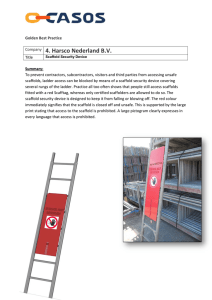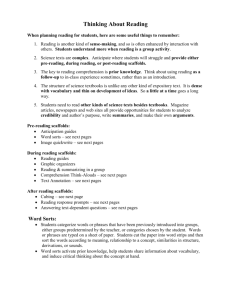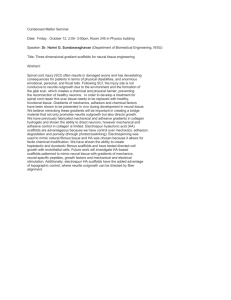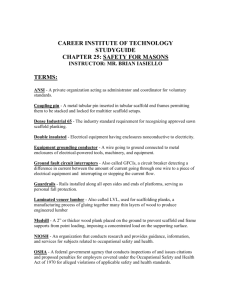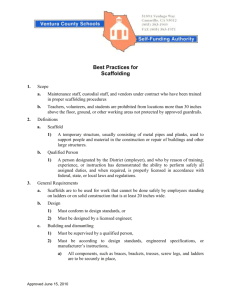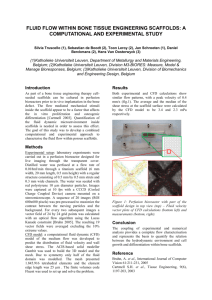tbt Scaffolds 6-19-14
advertisement
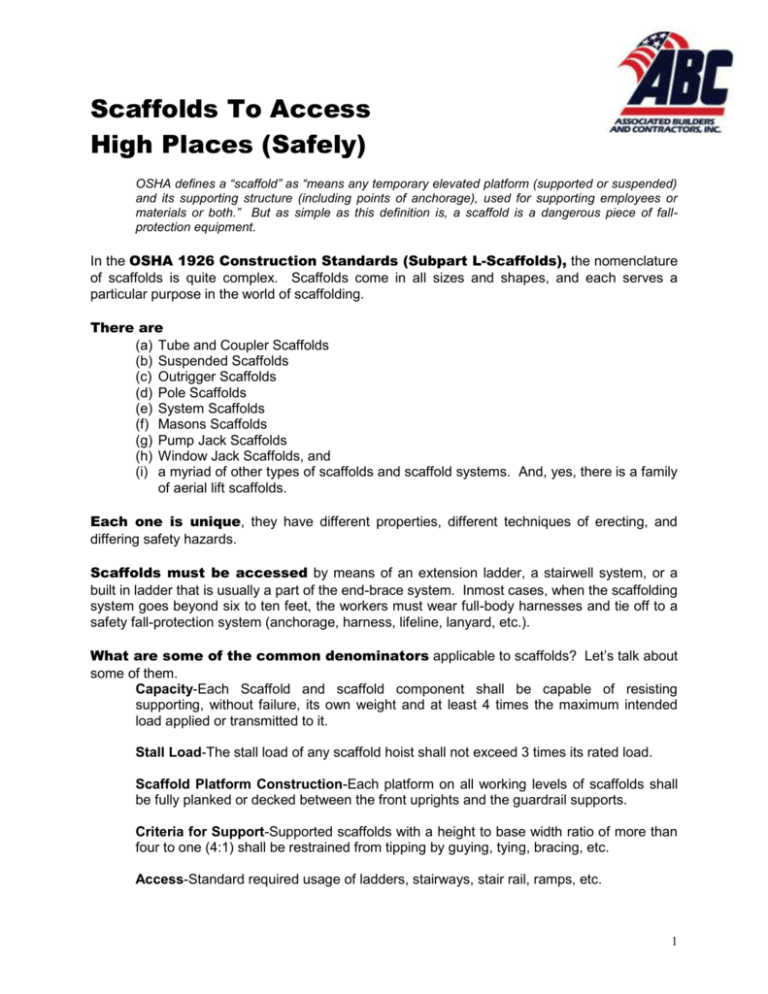
Scaffolds To Access High Places (Safely) OSHA defines a “scaffold” as “means any temporary elevated platform (supported or suspended) and its supporting structure (including points of anchorage), used for supporting employees or materials or both.” But as simple as this definition is, a scaffold is a dangerous piece of fallprotection equipment. In the OSHA 1926 Construction Standards (Subpart L-Scaffolds), the nomenclature of scaffolds is quite complex. Scaffolds come in all sizes and shapes, and each serves a particular purpose in the world of scaffolding. There are (a) Tube and Coupler Scaffolds (b) Suspended Scaffolds (c) Outrigger Scaffolds (d) Pole Scaffolds (e) System Scaffolds (f) Masons Scaffolds (g) Pump Jack Scaffolds (h) Window Jack Scaffolds, and (i) a myriad of other types of scaffolds and scaffold systems. And, yes, there is a family of aerial lift scaffolds. Each one is unique, they have different properties, different techniques of erecting, and differing safety hazards. Scaffolds must be accessed by means of an extension ladder, a stairwell system, or a built in ladder that is usually a part of the end-brace system. Inmost cases, when the scaffolding system goes beyond six to ten feet, the workers must wear full-body harnesses and tie off to a safety fall-protection system (anchorage, harness, lifeline, lanyard, etc.). What are some of the common denominators applicable to scaffolds? Let’s talk about some of them. Capacity-Each Scaffold and scaffold component shall be capable of resisting supporting, without failure, its own weight and at least 4 times the maximum intended load applied or transmitted to it. Stall Load-The stall load of any scaffold hoist shall not exceed 3 times its rated load. Scaffold Platform Construction-Each platform on all working levels of scaffolds shall be fully planked or decked between the front uprights and the guardrail supports. Criteria for Support-Supported scaffolds with a height to base width ratio of more than four to one (4:1) shall be restrained from tipping by guying, tying, bracing, etc. Access-Standard required usage of ladders, stairways, stair rail, ramps, etc. 1 Use-Scaffolds and components shall not be loaded in excess of their maximum intended loads or rated capacities. Housekeeping-Debris shall not be allowed to accumulate on platforms. Falling Objects-In addition to hard hats, each employee shall be protected from falling objects through the use of toe-boards, screens, nets, canopies, etc. Training Requirements-A competent person shall train all employees working on scaffolding to recognize hazards associated with the type of scaffolding being used. The above-listed safety criteria is a relatively short list of safety hazards associated with the erecting, dismantling and usage of scaffolding systems. All workers involved with any of these practices, must, in the opinion of the on-site competent person, be able to demonstrate his (the employee) comprehension of safety practices. Note, also, that if in the opinion of the competent person the employee lacks the necessary training associated with working on scaffolding, the worker shall be removed from the scaffolding site immediately. Here’s a wrap-up of general site safety involving working on scaffolding systems: All scaffolds must conform to the specifications found in ANSI A10.8 Safety Requirements for Scaffolding. Rolling scaffolds must maintain a 3:1 height to base ratio. The footings or anchorage for a scaffold must be sound, rigid, and capable of carrying the maximum intended load without settling or displacement. Unstable objects such as barrels, boxes, loose brick, etc., must not be used to support scaffolds or planks. No scaffold may be erected, moved, dismantled or altered unless supervised by competent persons. Scaffolds and their components must be capable of supporting at least four items the maximum intended load without failure. Guardrails and toe boards must be installed on all open sides and ends of scaffolds and platforms more than 10 feet above the ground floor. Scaffolds 4 feet to 10 feet in height having a minimum horizontal dimension in either direction of less than 45” must have standard guardrails installed on all open sides and ends of the platform. Wire, synthetic, or fiber rope used for suspended scaffolds, must be capable of supporting at least 6 times the rated load. Safety surrounding scaffolding and scaffolding systems is complex. If you’re engaged in any aspect of this particular construction procedure, you need a broad range of information and training to insure that you’re operating in a safe environment, both for you and your fellow workers. There are no Golden Words of Wisdom to share with scaffolding workers, other than to say that practice your trade well, be careful, and try at all times to be your brothers’ keeper on this dangerous mission. 2

